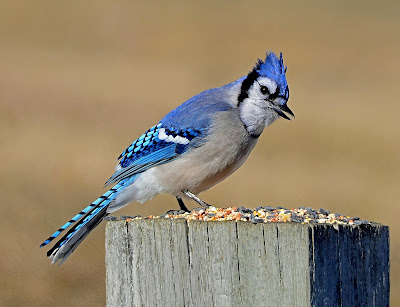Nature News
Whale feeding research important to understanding ocean
October 8 2016
by Sue Pike Portsmouth Herald/Fosters Daily Democrat/York Weekly
 |
| Hunpback feeding Photo by Steve Morello |
A recently published scientific paper titled “Kinematic Diversity in Rorqual Whale Feeding Mechanisms” (in Current Biology, Sept. 2016, Cade et al) caught my eye for a number of reasons. I had just been on my first whale watch in more than 20 years and had watched humpbacks feeding off of Stellwagen Bank. This article made me realize I didn’t know much about how whales feed or what they eat; I didn’t even know what a rorqual whale was.
The easiest question first: Rorqual whales are a family of baleen whales that includes the blue, humpback, minke and fin whales. According to the Oxford English Dictionary, the word rorqual comes from an Old Norwegian word, “røyrkval” that means furrow. Members of this family have longitudinal grooves (furrows) of skin running from their mouths down their bodies towards their naval which allow their mouths and throats to expand while feeding.
Whale feeding behaviors are complicated. The article about kinematic (the study of the motion of objects) diversity in rorqual whale feeding mechanisms was focused on the timing of when blue and humpback whales open their mouths while zooming through the water after schools of krill or fish (this is called lunge feeding). There was evidently some disagreement as to whether they open their mouths to engulf their prey while at top speed (uses less energy) or just before they reach top speed (uses more energy).
According to the authors of the study: “Rorqual whales exhibit an extreme lunge filter-feeding strategy characterized by acceleration to high speed and engulfment of a large volume of prey-laden water but, the timing of engulfment relative to body acceleration has been modeled conflictingly because it could never be directly measured.” These researchers were able to tag whales with sensors and cameras and directly observe feeding behavior. These kinds of studies are important because we know very little about how the baleen (filter-feeding) whales actually feed. This study was interested in the energy-cost of feeding strategies — opening their mouths too early creates drag which burns more calories than opening their mouths at top speed.
How do whales time these things? These whales are huge, they are feeding on schools of tiny prey — they need to make every movement count. This particular study showed that humpback whales time mouth-opening to type of prey. Whales that were hunting krill (slower moving, less calorie-dense) opened their mouths at peak speed (presumably to minimize energy expenditure), while those hunting fish varied their strategy, sometimes opening their mouths earlier, presumably because fish have more advanced escape strategies than the krill. This costs the whale more calories, but this is made up for because the fish can supply more energy than the krill.
Steven Morello (whale expert, wildlife photographer and member of the board of directors of the Alaska Whale Foundation) was on the whale watch with me. He filled me in on the whale feeding behavior we were observing. According to Morello, “The bottom line with whales — there’s no one answer to most questions. Even with something as cut and dry as what they eat, it seems that whales are as diverse in their behavior as people.” Different populations of humpback whales eat different things. “Some prey mostly on sand lance or other fish, some prey upon krill, some have varied diets. Depending upon location the bulk of food might be constant - around Antarctica whales feed largely upon Antarctic krill, or diet might be variable, like in Alaska where food depends upon season. The humpbacks feeding in the southern Gulf of Maine are mostly eating sand lance.”
Sand lance are cool little fish that lay eggs that adhere to sand grains making the eggs nearly invisible to predators. We could see sand lance, small slender fish, swarming around our whale watch boat. The humpbacks were after them, diving and releasing clouds and rings of bubbles that concentrated the sand lance and forced them up toward the surface where the whales could engulf giant mouthfuls.
Recent studies have described another unique technique (bottom side-rolling) that humpback whales in the Gulf of Maine use to hunt sand lance. This happens only at night when sand lance burrow into the seabed or form schools just above the ocean floor. The whales push along the ocean floor, sending up clouds of sand as they engulf hapless sand lance. This feeding behavior is not observed in the northern Gulf, where humpbacks eat herring instead of sand lance.
These feeding studies are just scratching the surface of what we don’t know about whales. Our ocean ecosystem evolved with the great whales playing a role as significant predators. By eating vast amounts of krill and fish, these whales cycle nutrients from their prey into the ocean (as waste). The effect of the mass removal of whales from the ocean upon the populations of other organisms (fish we like to eat for example) is poorly understood.
As of Oct. 11, most populations of humpback whales will be removed from the endangered species list. This is great! But there are only a tiny fraction of great whales in our oceans now compared to pre-whaling days. The better we understand what these whales need to thrive, the better we’ll be able to protect them and as a result protect the ocean.



Comments
Post a Comment